Diakhato & Pimento Riojano
Leone Contini and Marta Fernandez Calvo research plants that are tied to Italian and Spanish colonial histories and explore the way plants are adopted, cultivated and celebrated in very particular regions as part of local and national plant imaginaries.
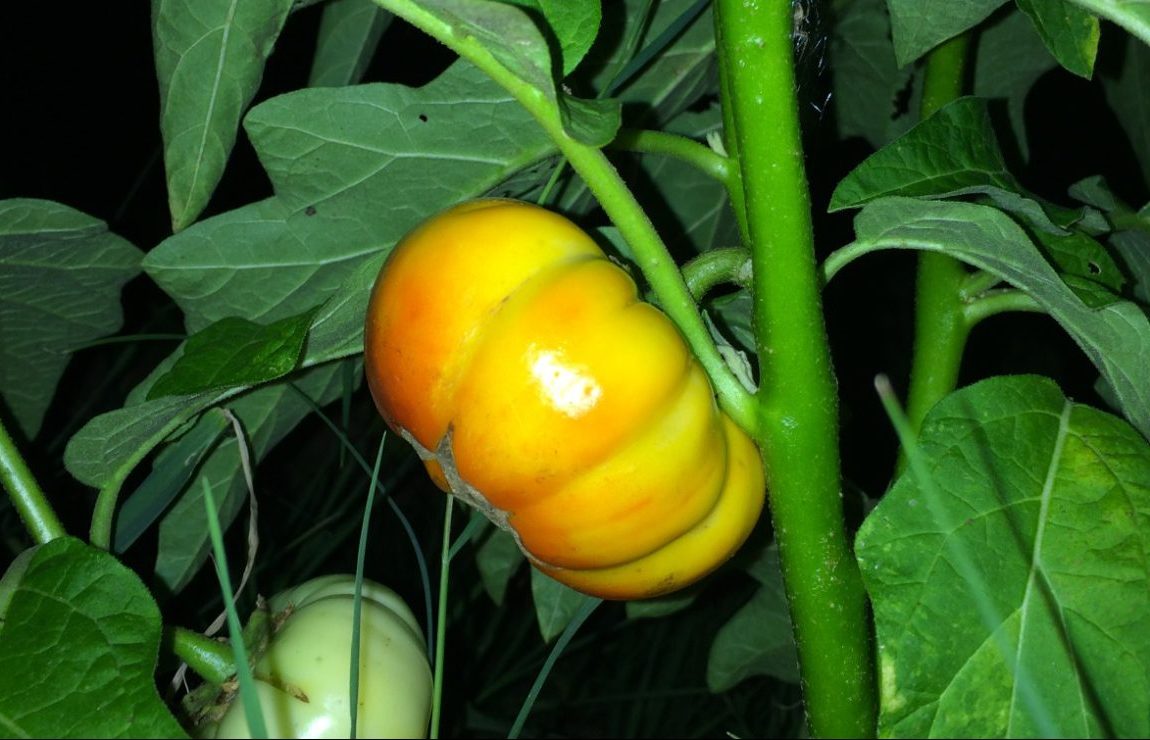
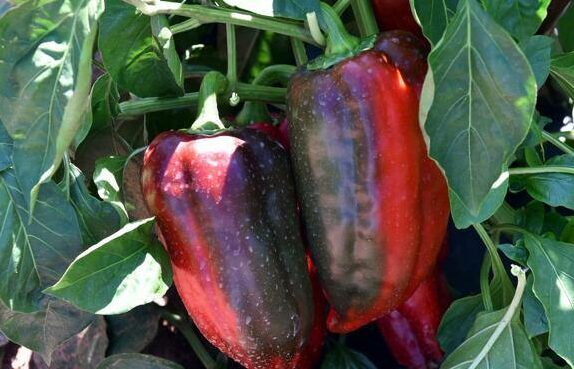
Leone Contini, Diakhato or merlingiana a pummadora (Solanum eethiopicum)
Ibrahim, from northern Senegal and also from here, on the banks of the Piave river, created a small garden of kandja [okra] and bissap [karkadè], as well as Senegalese pumpkins, watermelons and diakhato, a type of African aubergine, with a similar appearance to a tomato, whose colour changes from pale yellow to orange when ripe (or overripe).
A similar variant of this vegetable has already been cultivated for a long time in Italy, on the border between Basilicata and Campania, starting from seeds imported from veterans/settlers/occupiers of the colonial wars in East Africa.
Since 2007 the plant has even become a slow food presidium, under the name of “the Rotonda [the name of a town] red aubergine” (while the local denomination is “merlingiana a pummadora”, in the local dialect, meaning “the tomato-like aubergine”).
Despite the two aubergines being genetically very similar, the narratives around them differ. While the aubergine appropriated during a military war campaign is now praised and implemented as part of the Italian food heritage, the one that is cultivated out of seeds that arrived in Italy inside Ibra’s pocket is perceived as a foreign body, a potential threat to the integrity of the Italian territory, intended both in terms of landscape and soil (“terra” in Italian language means soil).
Marta Fernandez Calvo, Pimiento Riojano
I started this project choosing the tomato plant and have recently changed to a pepper plant. More specifically I have chosen a variety called Najerano pepper, also known as Pimiento Riojano, a variety that grows in La Rioja (Spain) where I am from.
I started this project choosing the tomato plant and have recently changed to a pepper plant. More specifically I have chosen a variety called Najerano pepper, also known as Pimiento Riojano, a variety that grows in La Rioja (Spain) where I am from.
I’ve chosen it for many reasons. First of all because of the strong memories of farmers coming to the surroundings of the neighborhood where I grew up in the small city of Logroño (La Rioja). Every farmer would make a mountain with their pepper harvest and stands beside it, day by day, until everything was sold. It was a cluster of red pepper mountains the size of a football pitch. It ran from September to the end of November and we would go, with my mum and aunties, mountain by mountain, asking the prices from each farmer to make our “conserva” for the year.
After a recent conversation with Maddy in my kitchen in Madrid I understood how the pepper plant has been traveling back and forth in my practice over the last few years, especially in projects such as Casa de Comidas (Delfina Foundation, London 2019 and Planta Baja, Madrid 2023) and I Turn Bad Things Away (with Ruta del Castor, Mexico 2021). So I will follow its traces through my own practice and personal histories to revisit the technologies, territories, practices and relations (human and non-human) that this plant has made visible.
-
Correspondence
Days 13-14/09/23
[13/09/23, 12:00:19] Leone Contini: hola here is Leone
[14/09/23, 12:57:23] Marta Fernandez: hola Leoneeeee
[14/09/23, 12:58:03] Marta Fernandez: how are you? So, should we start talking about tomatoes and aubergines? :))
[14/09/23, 12:58:33] Marta Fernandez: seems that we have a recipe already!
[14/09/23, 13:09:45] Leone Contini: Indeed
[14/09/23, 13:09:49] Leone Contini: 🙂
[14/09/23, 13:10:18] Leone Contini: Also, this albergine is named tomato
[14/09/23, 13:13:04] Marta Fernandez: ohh
[14/09/23, 13:13:22] Marta Fernandez: can I see?
[14/09/23, 13:17:54] Leone Contini: https://it.wikipedia.org/wiki/Solanum_aethiopicum#Coltivazione_in_Italia
[14/09/23, 13:18:16] Leone Contini: it is name like that only in a village in souther Italy actually
[14/09/23, 13:25:32] Marta Fernandez: noooo, qué increibleeeee
[14/09/23, 13:26:38] Marta Fernandez: do you have any ideas on what would you like to do for the exchange? I feel like cooking and drawing
[14/09/23, 13:27:57] Leone Contini: they say that italian soldiers brought the seeds back from Etiopia in the 30ies
[14/09/23, 13:34:46] Marta Fernandez: have you tried it?
[14/09/23, 13:35:01] Leone Contini: they try to push it as a d.o.p. [sort of d.o.c.]
[14/09/23, 13:35:05] Leone Contini: badly
[14/09/23, 13:35:12] Leone Contini: they invent recipes
[14/09/23, 13:36:12] Leone Contini: you can google “merlingiana pummadora”
[14/09/23, 13:36:35] Leone Contini: for example: https://www.lacucinaitaliana.it/news/in-primo-piano/melanzana-rossa-basilicata-simile-al-pomodoro/
[14/09/23, 13:39:00] Leone Contini: they try to “patrimonialize” something that was stolen during colonial wars
[14/09/23, 13:42:38] Marta Fernandez: omg
[14/09/23, 14:54:16] Leone Contini: Where are you based ?
[14/09/23, 15:03:12] Marta Fernandez: Madrid
[14/09/23, 15:03:15] Marta Fernandez: You?
[14/09/23, 15:19:46] Leone Contini: Tuscany
Days 15-16-17/09/23
[15/09/23, 18:26:58] Leone Contini: maybe in some African shop you can find it in Madrid
[15/09/23, 18:27:09] Leone Contini: In Senegal it is called aubergine amère
[15/09/23, 18:27:16] Leone Contini: bitter aubergine
[15/09/23, 18:27:28] Leone Contini: it is eaten while still pale
[15/09/23, 18:27:55] Leone Contini: funny that in Italy they wait until is “ripe”… I mean ripe according to their understanding
[15/09/23, 18:28:11] Leone Contini: they think about it as a tomato!
[15/09/23, 18:28:29] Leone Contini: so they wait until is orange
[15/09/23, 18:28:43] Leone Contini: in Africa is usually eaten when still green-yellow
[16/09/23, 12:38:55] Marta Fernandez: Oh that’s so incredible! I will do a search in Lavapiés in Madrid where there are some African shops
[16/09/23, 12:39:25] Leone Contini: I think September is still easy to find “local” ones
[16/09/23, 12:39:51] Leone Contini: If not they probably import them
[17/09/23, 15:12:35] Marta Fernandez: Increíbles
Day 22/09/23
[22/09/23, 12:23:26] Leone Contini: Hi Marta
[22/09/23, 12:23:39] Leone Contini: Tell me something about your tomato 🍅
[22/09/23, 12:24:32] Marta Fernandez: Hey Leone
[22/09/23, 12:24:42] Marta Fernandez: Yessss!!! I am at it
[22/09/23, 12:25:28] Marta Fernandez: I will send you things soon and I am very free for it from next Monday
[22/09/23, 12:25:34] Marta Fernandez: Is that ok for you?
[22/09/23, 12:41:55] Leone Contini: Sure
[22/09/23, 12:42:11] Leone Contini: Maybe this chat can also be part of our outcome?
[22/09/23, 17:37:26] Marta Fernandez: I think so?
Day 28/09/23
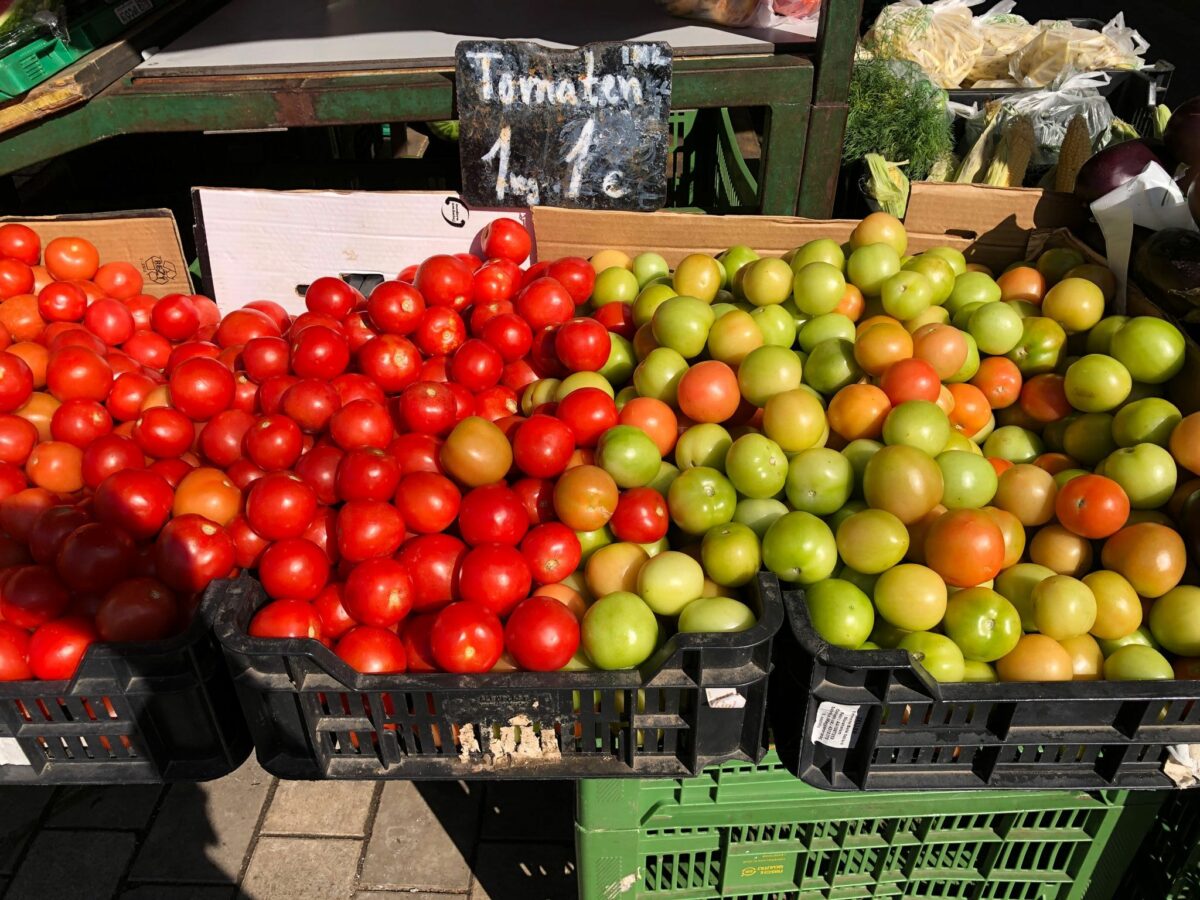
[28/09/23, 18:06:31] Marta Fernandez: Here some tomatoes I’ve found yesterday in Brunnenmarkt in Vienna. I’ve never seen yellow tomatoes before and today, researching about the arrival of tomatoes in Europe (1521) I’ve learned that the first documentation of its consumption was made in Italy (1544) where they mention a ‘Pom d’oro’ which might have been this yellow variety. I wonder if it is still common in Italy
[28/09/23, 18:08:22] Marta Fernandez: I might go back to the market and get some to try some recipe. Any suggestions? Maybe some family recipe of yours?
[28/09/23, 18:09:44] Marta Fernandez: I will be in Vienna for the next month so I can dive into yellow tomatoes for a while
[28/09/23, 18:12:56] Leone Contini: the green ones are very good if grilled
[28/09/23, 18:33:44] Marta Fernandez: And do you cut them in slices?
[28/09/23, 18:35:26] Leone Contini: yes
[28/09/23, 18:35:34] Leone Contini: it’s delicious
[28/09/23, 18:35:49] Leone Contini: it is better not eat it crudo [raw]
[28/09/23, 18:36:24] Marta Fernandez: the yellow-green one?
[28/09/23, 18:36:28] Leone Contini: it can be toxic
[28/09/23, 18:36:36] Leone Contini: yellow I don’t know
[28/09/23, 18:37:05] Leone Contini: there is a yellow sweet variety but these look like it’s the end of summer 😉
[28/09/23, 18:37:18] Leone Contini: so not fully ripe
[28/09/23, 18:37:35] Marta Fernandez: for some reason I was not sure about eating them crudo
[28/09/23, 18:38:02] Leone Contini: you are a survivor 😉
[28/09/23, 18:38:11] Marta Fernandez: jaja sure!
[28/09/23, 18:38:18] Marta Fernandez: and now I know it!
Day 08/10/23
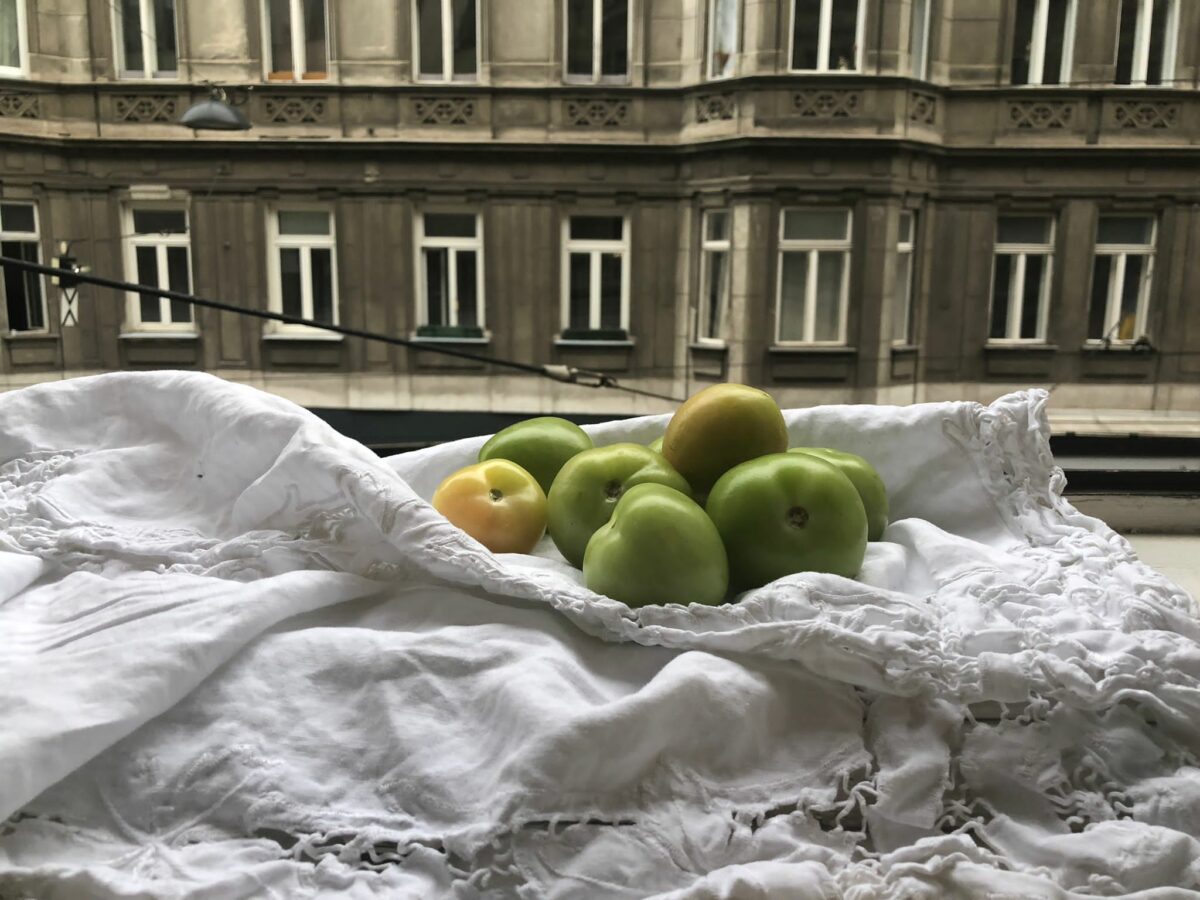
[08/10/23, 11:10:11] Marta Fernandez: Apparently in Indonesia they use raw green-yellow tomatoes for a certain fresh kind of flavour in some dishes
[08/10/23, 11:46:21] Leone Contini: Are you together? Say hello!
[08/10/23, 11:46:38] Leone Contini: It sounds delicious
[08/10/23, 21:33:56] Marta Fernandez: siiii, me and Elia are in a residency in Vienna 🙂 she says hello back to you
[08/10/23, 21:46:28] Leone Contini: niiice
[11/10/23, 18:09:39] Leone Contini: Do you have a recipe?
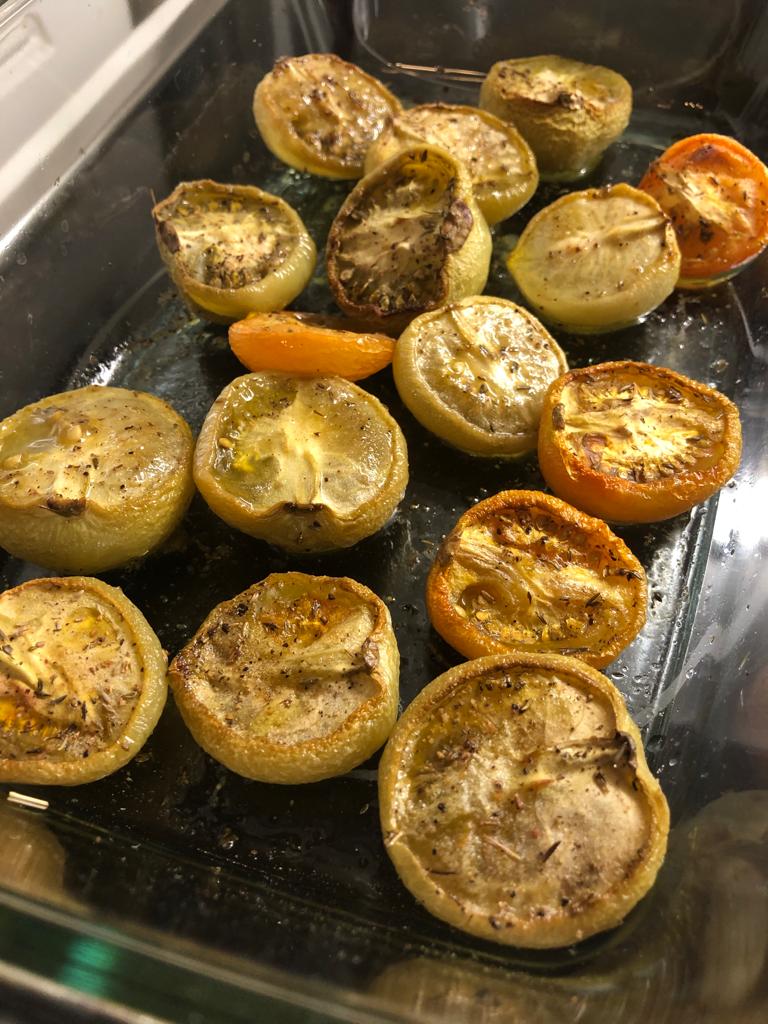
[12/10/23, 11:50:18] Leone Contini: delicious
[12/10/23, 12:02:55] Marta Fernandez: Siiiii
Days 31/10/23 – 31/10/23
[31/10/23, 22:09:59] Marta Fernandez: Hey Leone, how are you? I’ve been with Maddy these days in Madrid and understood more about this plant exchange. I wanted to tell you that I’ve decided to change the tomato plant for the Najerano pepper plant, a variety that I’d really love to ‘follow’ for a longer period.
[31/10/23, 22:10:51] Marta Fernandez: Are you very busy from the 2nd of November? Maybe we could exchange from then until our meeting on the 8th?
[31/10/23, 22:11:05] Marta Fernandez: let me know
[31/10/23, 22:11:23] Marta Fernandez: good night Tuscany
[01/11/23, 00:36:56] Leone Contini: I’m busy but yes!
[01/11/23, 00:36:56] Leone Contini: Good night
06-07-09/11/23
[06/11/23, 19:01:29] Marta Fernandez: Hola Leone, this is my Najerano pepper (there isn’t English version in Wikipedia so please let me know if you need help for translation)
[06/11/23, 19:01:32] Marta Fernandez: https://es.wikipedia.org/wiki/Pimiento_najerano
[06/11/23, 19:09:24] Marta Fernandez: I’ve chosen it for many reasons. First of all because of the strong memories of the farmers coming to the surroundings of the neighbourhood where I grew up in the small city of Logroño (La Rioja). Every farmer will make a mountain with the pepper harvest and will stand beside it ,day by day, until everything was sold. It was a cluster of red pepper mountains the size of a football pitch. It run from September to the end of November and we will go, with my mum and aunties, mountain by mountain, to know the prices of each farmer to make our conserva for the year
[06/11/23, 19:11:06] Marta Fernandez: While men were roasting the peppers (there are lots of technologies for it, as I am sure you have in Italy too) women and children will be peeling with lots of care and never touching water
[06/11/23, 19:13:20] Marta Fernandez: Apart from the family choreographies it creates in its preservation, I love how it interacts with the city landscape/becomes part of it
[06/11/23, 19:15:52] Marta Fernandez: Also, as I was just posting in the Follow the plants group, I want to trace its presence and transformations in my recent projects Casas de Comidas (Delfina 2019 and currently in Madrid) y Yo echo para atrás las cosas malas – I Turn Bad Things Away (Mexico 2021)
[06/11/23, 19:17:00] Marta Fernandez: Do you want to tell me something about your aubergine? How is it entangled with your practice, interests…?
[06/11/23, 19:20:27] Marta Fernandez: I can’t find melanzane rosse here but yesterday I cooked very long ones I’ve never seen before from a farmers market nearby. I also roasted some red peppers to fill the house with the smell of both
[06/11/23, 23:19:52] Leone Contini: Hi Marta sorry I’m a bit unfocused
[06/11/23, 23:20:08] Leone Contini: We had a flood in the region
[06/11/23, 23:20:12] Leone Contini: Very scary
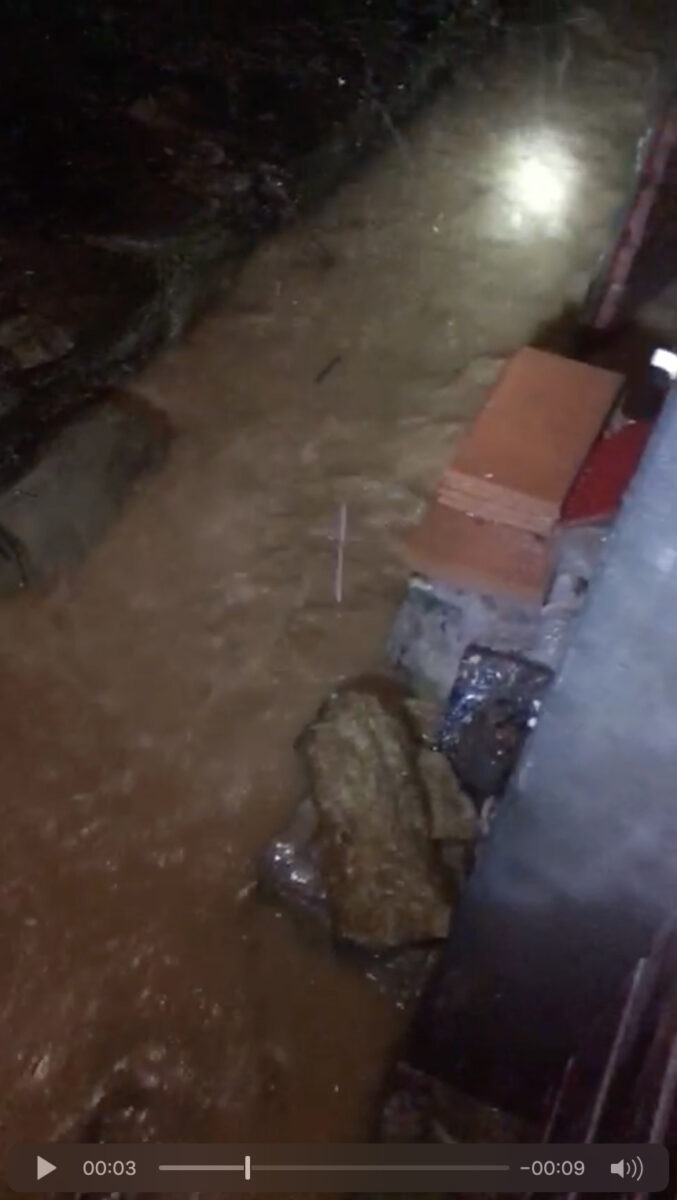
Days 07-08/11/23
[07/11/23, 00:36:11] Marta Fernandez: Omg Leoneeee
[07/11/23, 00:36:45] Marta Fernandez: So sorry to see this! I hope you are well
[07/11/23, 08:33:07] Leone Contini: Yes all fine but it was a fight
[07/11/23, 09:16:31] Marta Fernandez: I can immagine
[08/11/23, 09:04:11] Leone Contini: Hi
[08/11/23, 09:04:31] Leone Contini: Lovely memories [referring to Marta’s memories in La Rioja]
[08/11/23, 09:05:30] Leone Contini: “No poseen sabor picante”
[08/11/23, 09:26:53] Marta Fernandez: No! Son dulces
[08/11/23, 09:32:54] Leone Contini: Di you have pictures of them?
[08/11/23, 09:49:05] Leone Contini: I found something similar maybe
[08/11/23, 09:52:56] Leone Contini: Here more info about the aubergine: Diakhute, or merlingiana a pummadora.pdf • 2 pagine <allegato: 00000109-Diakhute, or merlingiana a pummadora.pdf>
[08/11/23, 10:54:25] Marta Fernandez: I couldn’t find them here as well as your melanzana rossa. I found some at the farmers market last Saturday that look similar and roasted them the same way we do in La Rioja to see if they smell and taste the same. They were quite close in sweetness but not in smell. I roasted them the same afternoon of the aubergines I was telling you the other day. I felt this was the closer I could get with what is available. I am going back to Spain next week and might hopefully catch some in the pepper market in Logroño!
[08/11/23, 10:55:03] Leone Contini: do you have a picture of what you roasted?
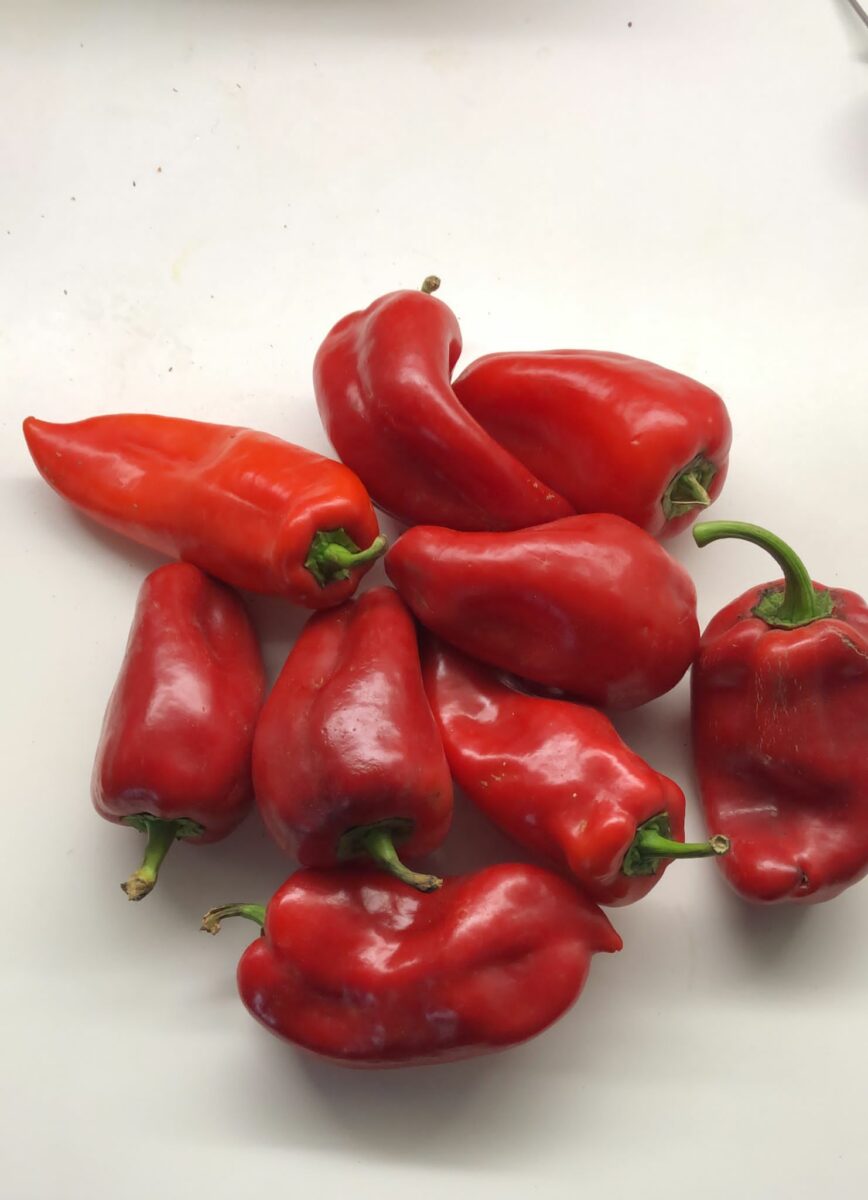
[08/11/23, 10:55:27] Leone Contini: ah you mean the peppers
[08/11/23, 10:55:47] Leone Contini: I got confused with aubergines
[08/11/23, 10:55:51] Leone Contini: sorry
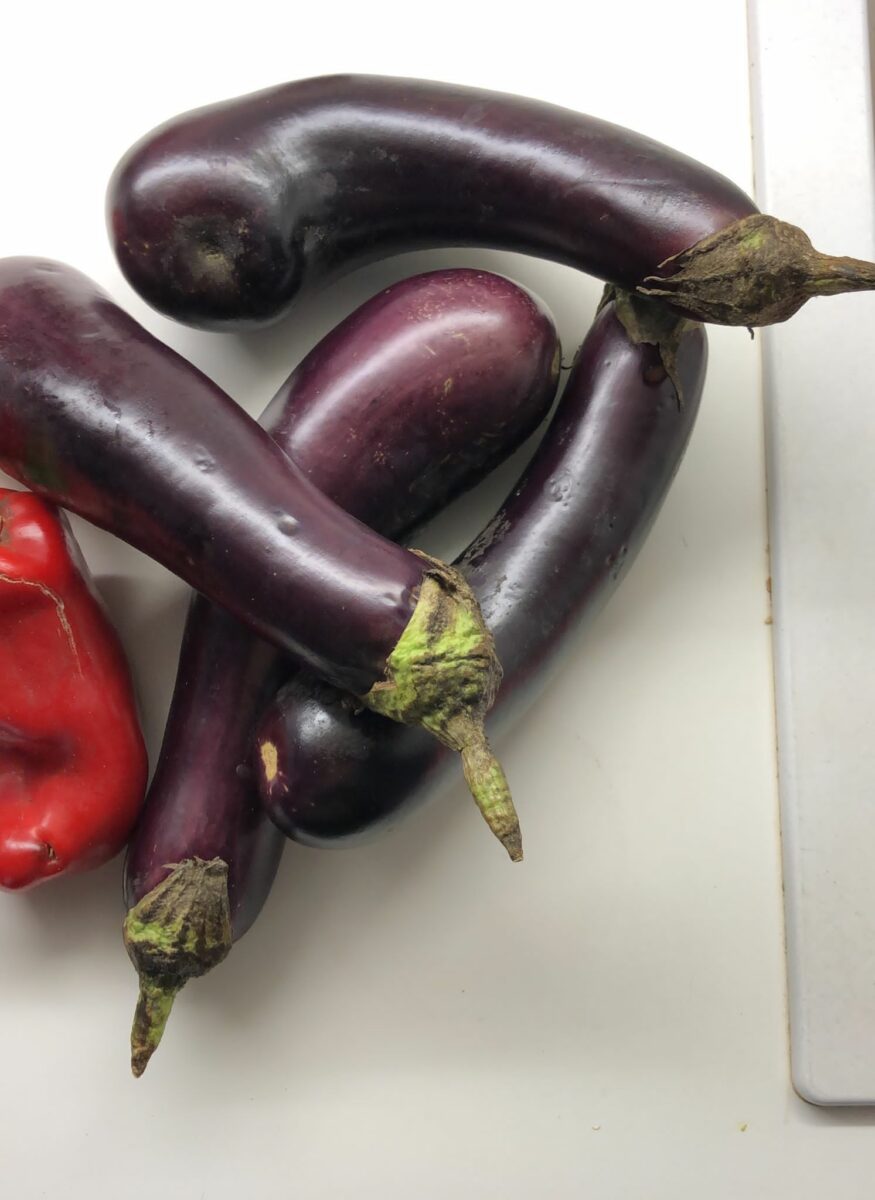
[08/11/23, 10:56:13] Leone Contini: ok
[08/11/23, 10:56:32] Leone Contini: “my” aubergine is very specific
[08/11/23, 10:56:35] Leone Contini: sorry ahaha
[08/11/23, 10:56:46] Marta Fernandez: I know! I love it!
[08/11/23, 10:57:06] Marta Fernandez: It might make me invent crazy things to get closer to it
[08/11/23, 10:57:08] Leone Contini: I sent you the image yes?
[08/11/23, 10:57:16] Marta Fernandez: Si!
[08/11/23, 10:57:25] Marta Fernandez: Tomato looking lady
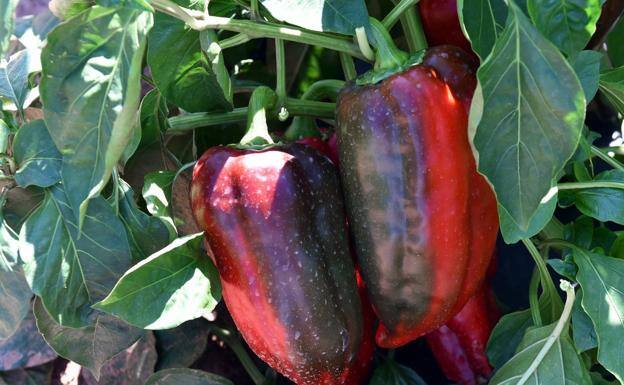
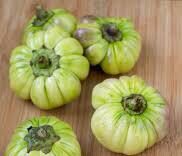
[08/11/23, 10:58:27] Marta Fernandez: Wowwwww
[08/11/23, 10:58:52] Marta Fernandez: I have to try the African shops in Lavapiés in Madrid
[08/11/23, 10:59:31] Marta Fernandez: Do you have any particular way of cooking it or recipe that you like?
[08/11/23, 11:00:37] Leone Contini: yes! maybe they call it bitter aubergine among Nigerians
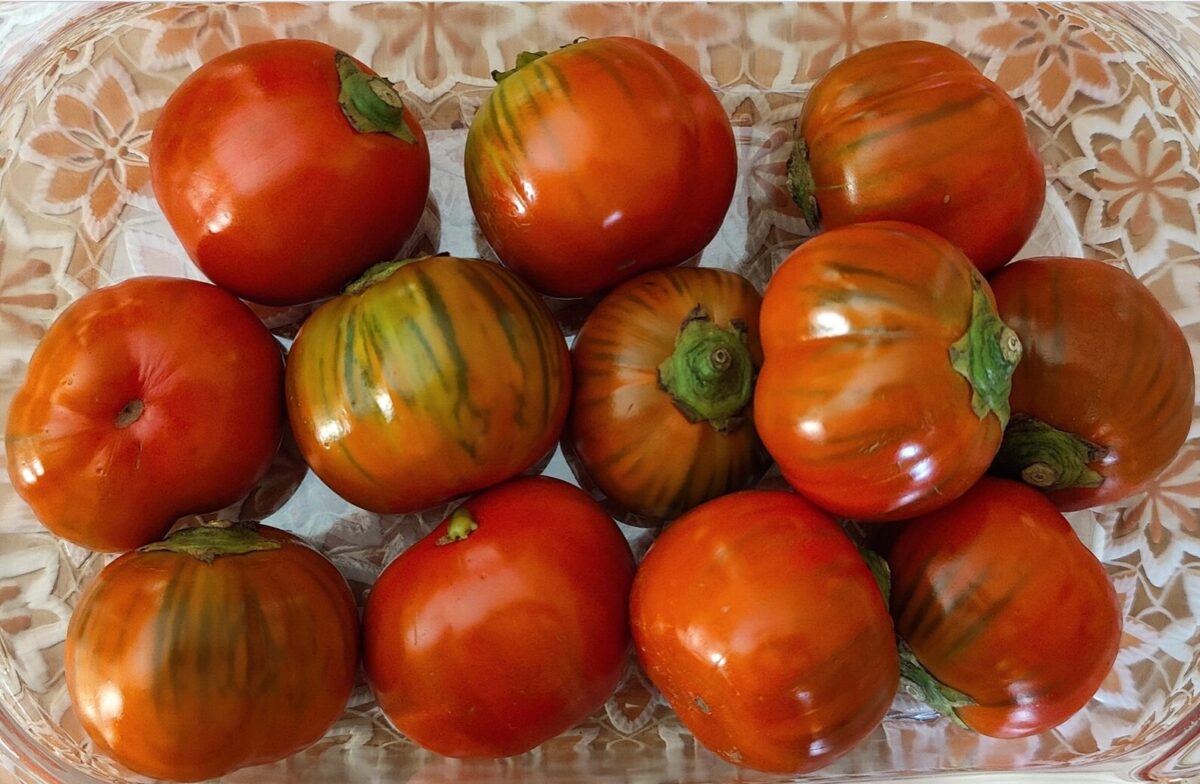
[08/11/23, 11:01:47] Leone Contini: scientific name is the same Solanum aethiopicum
[08/11/23, 11:02:35] Leone Contini: Difference of colour is mainly related with food habits [different time of harvest]
[08/11/23, 11:03:16] Marta Fernandez: oh wowwwww
[08/11/23, 11:03:36] Leone Contini: I mean, if you wait it will become red… also the African one, I learned it by growing them years ago
[08/11/23, 11:04:23] Leone Contini: So the main difference is shape
[08/11/23, 11:05:16] Marta Fernandez: It wold be amazing to try in Spain and see what happens
[08/11/23, 11:06:39] Marta Fernandez: do you still grow it?
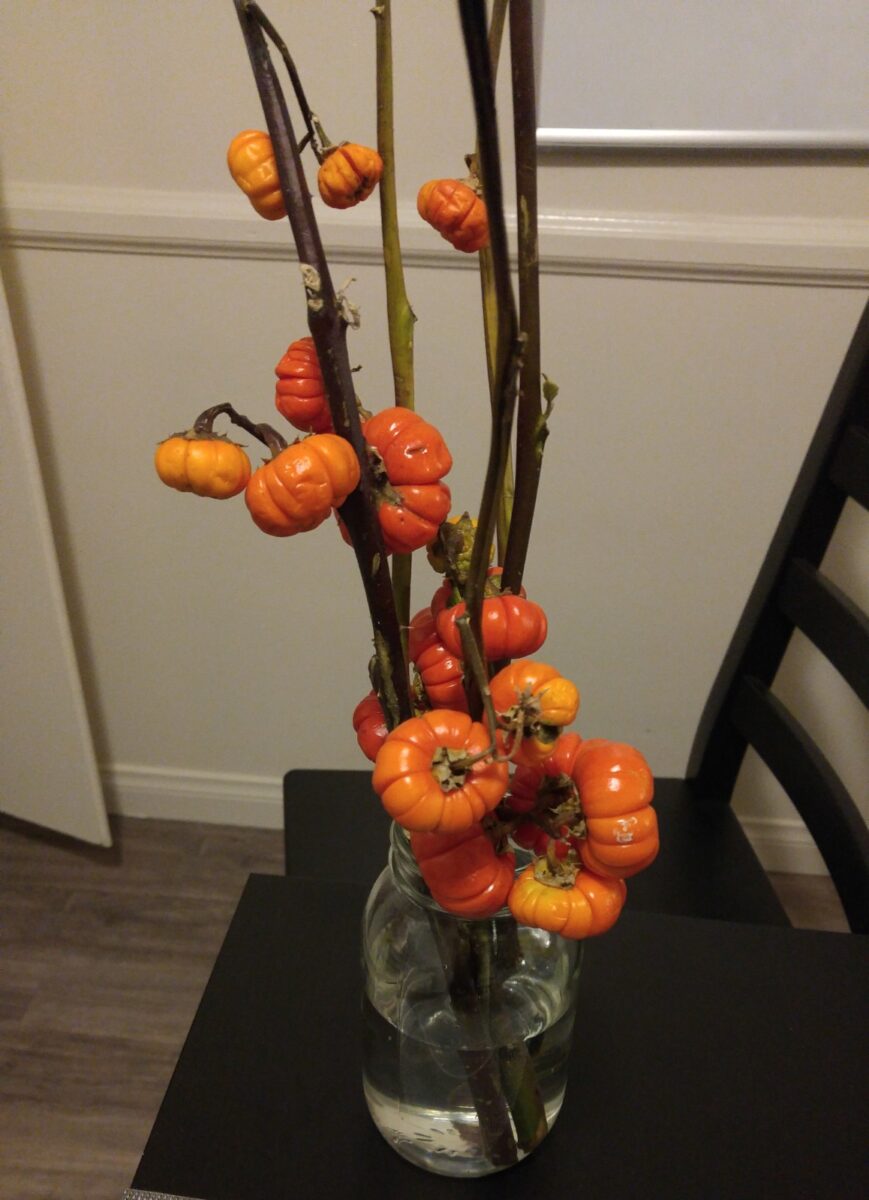
[08/11/23, 11:07:28] Marta Fernandez: nooooooo
[08/11/23, 11:07:41] Leone Contini: but just to show you how similar they are once fully ripen
[08/11/23, 11:08:01] Marta Fernandez: they are beautiful
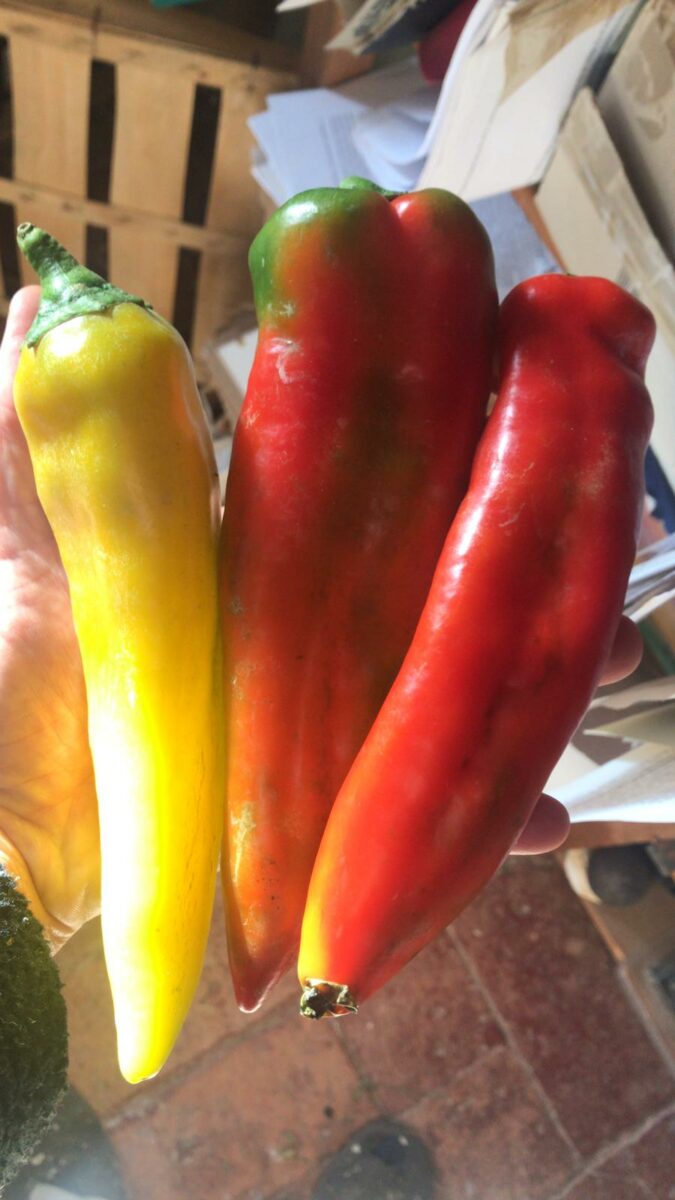
[08/11/23, 11:14:17] Marta Fernandez: in your garden?
[08/11/23, 11:14:34] Leone Contini: no I bought them
[08/11/23, 11:15:01] Leone Contini: after you mention your veg
[08/11/23, 11:15:07] Marta Fernandez: ah! The najerano one is big and very meaty
[08/11/23, 11:16:12] Leone Contini: these are pretty big, very different from the usual ones
[08/11/23, 11:16:15] Marta Fernandez: I love the collection of peppers and aubergines we can have trying to get closer to our very specific one!
[08/11/23, 11:16:23] Leone Contini: ahaha
[08/11/23, 11:16:24] Leone Contini: yes
[08/11/23, 11:16:39] Marta Fernandez: 🙂
[08/11/23, 11:16:47] Marta Fernandez: you ready for the meeting?
[08/11/23, 11:33:59] Marta Fernandez: I was thinking how our plants, despite coming from very different territories, have adapted and become so native to the new one reacting or in dialogue with the particular soil with very specific characteristics such as sweetness, size and a very meaty pepper here. And your chameleonic aubergine!
[08/11/23, 11:45:28] Leone Contini: but I don’t know if aubergine adapted or is another cultivar
[08/11/23, 11:46:06] Leone Contini: almost ready, I found more images from previous research, do we have a chat with Maddy also?
[08/11/23, 11:46:29] Marta Fernandez: today, yes. i think with Maddy and Yvonne
[08/11/23, 11:50:38] Leone Contini: Yes
[08/11/23, 11:50:45] Leone Contini: I meant, here on whatsapp
[08/11/23, 11:50:53] Leone Contini: to share some images
[08/11/23, 11:51:22] Marta Fernandez: share with them you mean?
[08/11/23, 11:51:53] Leone Contini: yes
[08/11/23, 11:52:22] Marta Fernandez: I don’t know
[08/11/23, 11:52:31] Marta Fernandez: we can ask them maybe?
[08/11/23, 11:53:43] Leone Contini: I sent them to her via whatsapp and so I will do here with you
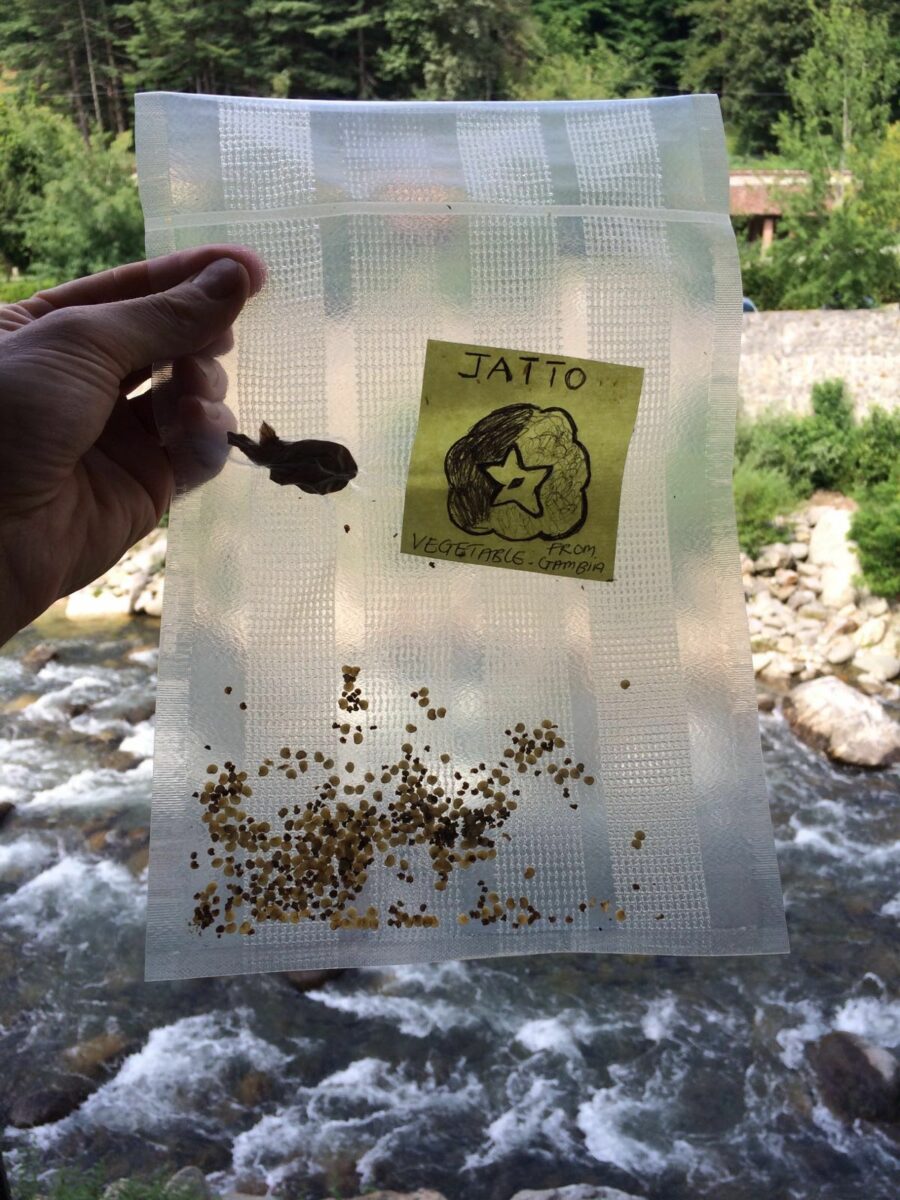
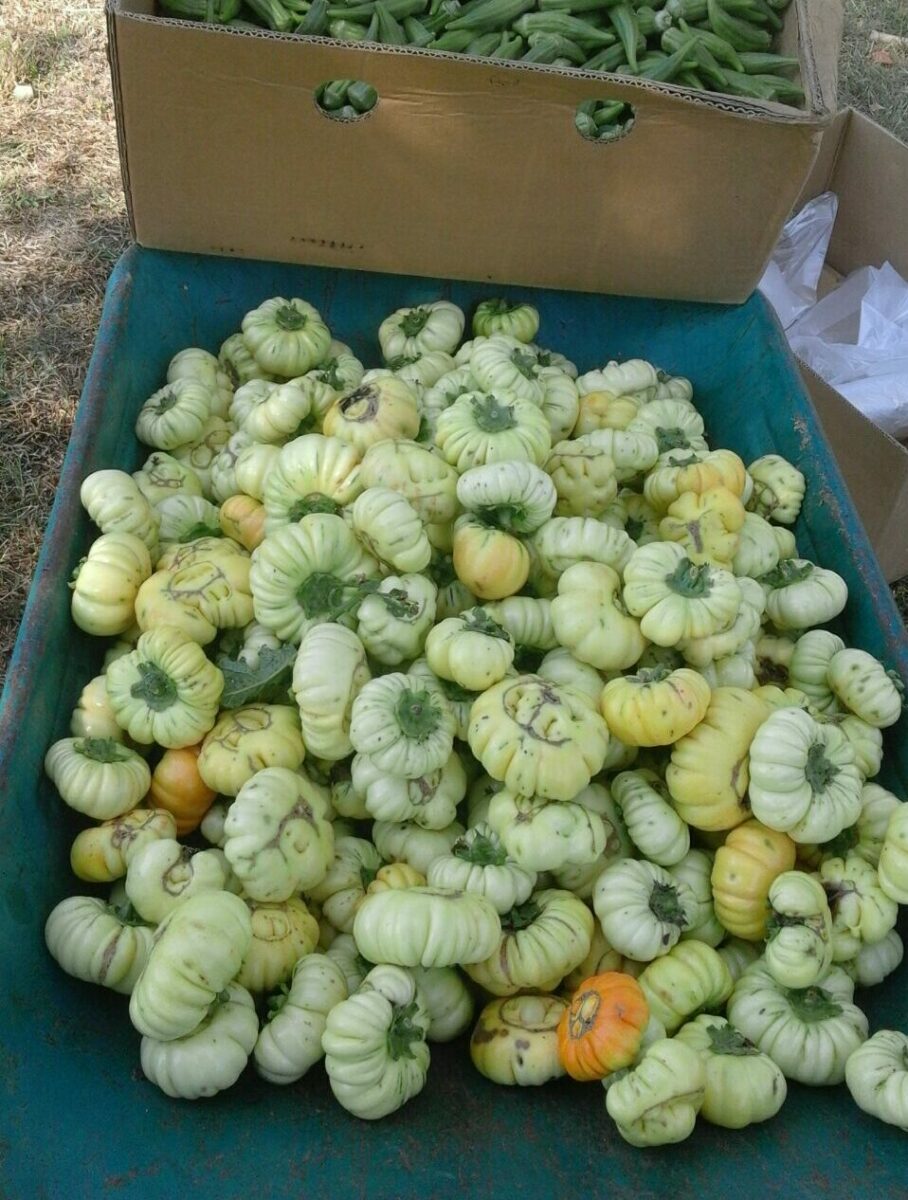
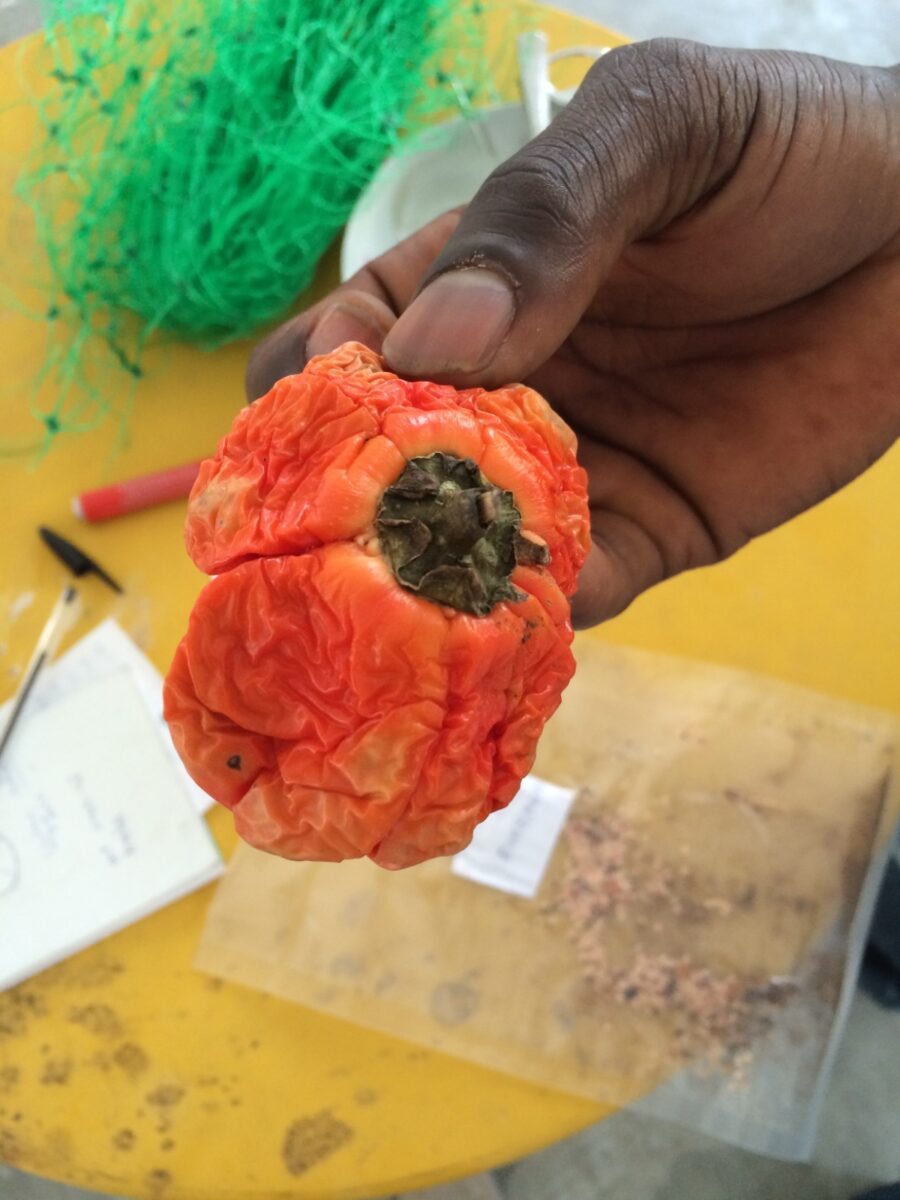
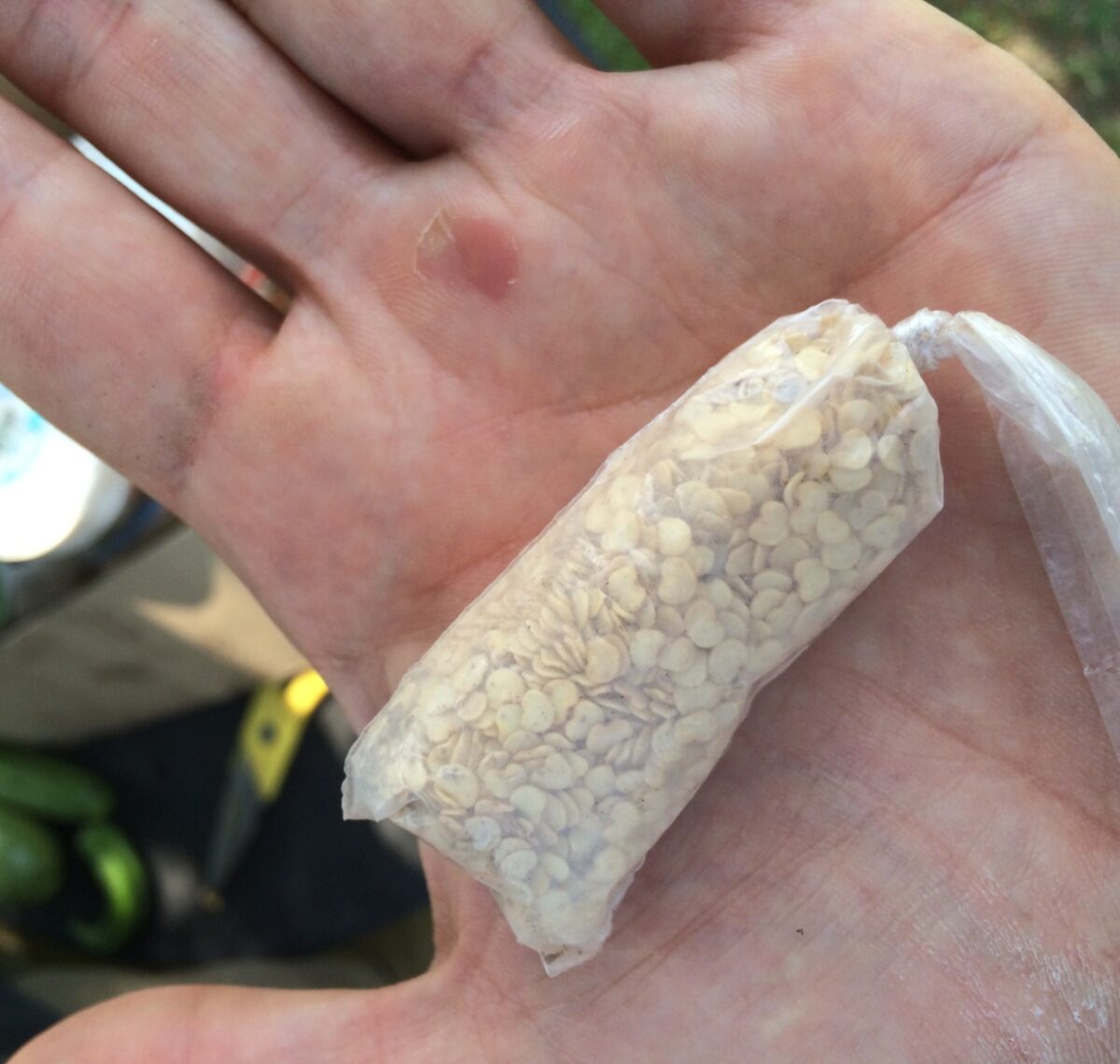
[08/11/23, 11:54:15] Leone Contini: This is how I exchanged seeds and stories with other farmer